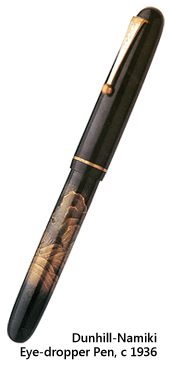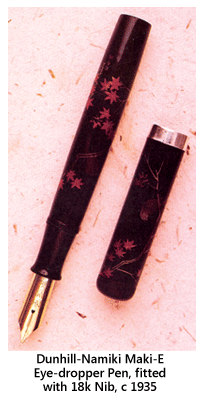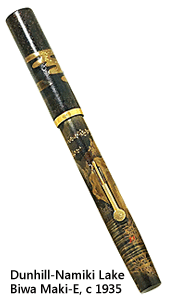- Prelude
- Editorial
- A Conversation with Sheela Gowda
- The DIY Artist with a Mission
- Discovering Novel Horizons
- A Conversation with Raqs Media Collective
- Manjunath Kamath
- Jitish Kallat- the Alchemist
- The Artist and the Dangers of the Everyday: Medium, Perception and Meaning in Shilpa Gupta's work
- An Attitude for the Indian New Media
- Weave a Dream-Theme Over Air or a Medium like Ether
- Installation in Perspective: Two Outdoor Projects
- Towards The Future: New Media Practice at Kala Bhavana
- Workshop @ Facebook
- Desire Machine: Creating Their Own Moments…
- Typography: The Art of Playing with Words
- Legend of a Maverick
- Dunhill-Namiki
- The Period of Transition: William and Mary Style
- The Beauty of Stone
- Nero's Guests: Voicing Protest Against Peasant's Suicides
- Patrons and Artists
- The Dragon Masters
- What Happened and What's Forthcoming
- Art Chennai
- Art Events Kolkata
- Winds of Change
- Art Bengaluru
- Mumbai Art Sighting
- Musings from Chennai
- In the News
- Previews
- Ascending Energy, Merging Forms: Works by Satish Gujral
- Re-visiting the Root
- The Presence of Past a New Media Workshop
- Taue Project
ART news & views
Dunhill-Namiki
Volume: 3 Issue No: 15 Month: 4 Year: 2011
Collectibles
by Anurima Sen
 On August 19, 2010, Bonhams hosted an auction of deluxe fountain pens proving to the entire world that exquisite writing instruments were still very much in demand- that they were signs of an older, wiser, tranquil time unlike our contemporary world, daily succumbing to the pressures of the modernization such as instant messaging. They auctioned the limited edition Dunhill-Namiki Lake Biwa Maki-e fountain pen. This artist signed, vintage fountain pen combines several of the best Japanese lacquer techniques (seen in the Asian landscape, depicting Lake Biwa) and is the result of the legendary partnership between Dunhill and Namiki in the 1930s. It was tagged to sell for around $30,000. The other collector's item that featured on the auction list was the Dunhill-Namiki Motorities Maki-e limited edition pen. The most noticeable feature of this pen lies in its fine detailing in gold dust and the use of mother-of-pearl Raden. The design includes wheels and flames, in honour of the brand's early 1900s line of automobile accessories termed “Dunhill Motorities”. This pen also carried an estimate of $20,000- $30,000.
On August 19, 2010, Bonhams hosted an auction of deluxe fountain pens proving to the entire world that exquisite writing instruments were still very much in demand- that they were signs of an older, wiser, tranquil time unlike our contemporary world, daily succumbing to the pressures of the modernization such as instant messaging. They auctioned the limited edition Dunhill-Namiki Lake Biwa Maki-e fountain pen. This artist signed, vintage fountain pen combines several of the best Japanese lacquer techniques (seen in the Asian landscape, depicting Lake Biwa) and is the result of the legendary partnership between Dunhill and Namiki in the 1930s. It was tagged to sell for around $30,000. The other collector's item that featured on the auction list was the Dunhill-Namiki Motorities Maki-e limited edition pen. The most noticeable feature of this pen lies in its fine detailing in gold dust and the use of mother-of-pearl Raden. The design includes wheels and flames, in honour of the brand's early 1900s line of automobile accessories termed “Dunhill Motorities”. This pen also carried an estimate of $20,000- $30,000.
This brings to mind another auction held in Los Angeles in February 2009, offered at Bonhams & Butterfields. This single owner assortment included the rarest of pens from major manufacturers including Mont Blanc, Pelikan, Visconti and of course, Dunhill-Namiki. The Dunhill-Namiki Sakura Rose that was auctioned, is a limited collection pen, and celebrates the 75th year of the famed partnership. It has been designed by the Maki-e master Kyusai Yoshida and it represents much like the Lake Biwa fountain pen, the spirit of the collaboration. The cap itself is an example of fine lacquer work- it shows a spray of pink cherry blossoms- while the body displays an assortment of golden roses. It was sold for $48,800.
the Lake Biwa fountain pen, the spirit of the collaboration. The cap itself is an example of fine lacquer work- it shows a spray of pink cherry blossoms- while the body displays an assortment of golden roses. It was sold for $48,800.
A rare Dunhill-Namiki Maki-e Lacquer pen from the 1930s made its way onto the cover of Bloomsbury Auction's 2004 London Pen Show catalogue. This series, much coveted by collectors all over the world, was designed by the artist Kosai Okoshi and featured excellent lacquer work like all their pens. The designs are entirely influenced by Japanese art styles, and also the traditional Noh theatre (“Noh” or “Nogaku” being Japanese for “talent”- it is a form of musical drama that has continued from the fourteenth century). This pen was valued at £50,000 in the year 2004.
In order to understand the significance of the Dunhill-Namiki collaboration and the exquisite hand painted lacquer maki-e (maki-e being a technique of dusting gold on surfaces to give the pens their luxurious ornamentation) fountain pens that were produced by them, one needs to take a look at the history of these brands. The forebears of Alfred Dunhill Ltd. were farmers and shopkeepers in Nottinghamshire before they moved to London to set up shop as linen drapers in Oxford Street. Soon they branched out into the harness business and set up a prospering shop on Euston Road. In 1893 Alfred Dunhill, aged twenty one, took over his father's business and converted it into Dunhill Motorities- a company providing all possible accessories for the car as the company motto highlighted: 'Everything for the car but the motor'- and soon followed a host of other luxury products, largely catering to men. The Namiki Manufacturing Co. had already developed the process of Maki-e on writing instruments by then. Over forty artists were engaged to impart different styles to each pen, and they often signed these pens, thereby making it easier to identify them today. The Namiki Manufacturing Co. was the predecessor of the present Pilot Corporation, and was initially engaged in manufacturing nibs tipped with iridium before they ventured into the realm of crafting pens. They produced its first Maki-e decorated pens in 1924 and signed a contract to produce them for Dunhill three years later. Dunhill entered the area of pen-making in 1929 with a small calendar pencil, in gold, silver and lacquer. With the outbreak of the Second World War, Alfred Dunhill severed ties with Namiki. However, they had already produced pens that would capture the imagination of pen lovers all over the world. Perhaps the reason for the popularity of Dunhill-Namiki fountain pens in collectors' circles lay in difference between Japanese and Western design. The author of the book Dunhill-Namiki and Lacquer Pens, Tomihiro Murakami, explains: “It is a radical departure from Western graphics based on individuals, events and histories. Japanese lacquer pens are asymmetrical in design. Japanese like miniature things, compiling of striking intricate layers. The lacquer work only expresses cranes, cherry blossoms and other common objects…it is made of regular things. The complexity, though, is packed in the Zen itself. Maki-e is a small square world in which much time and space were condensed.” One of the first fountain pen designs to appear in Dunhill's 1929 pen catalogue was highly lauded and described as “a triumph of the lacquerer's art”. It depicts an antique Chinese vessel, all banners flying, sailing through tempestuous waters. The pen displays a wide variety of lacquer techniques with a hint of Art Deco style. The pens were sold by Dunhill in four grades according to both quality and adornment, with 'A' being at the top of the list. Many 'A' grade pens were in particular ordered by Dunhill's privileged and influential clients who were the elite, royalty, film-stars, and those in the highest echelons of the arts and theater. Before the breach in production that occurred in 1938, it has been estimated that only around 1500 exclusive 'A' grade pens were produced by Dunhill-Namiki.
in gold, silver and lacquer. With the outbreak of the Second World War, Alfred Dunhill severed ties with Namiki. However, they had already produced pens that would capture the imagination of pen lovers all over the world. Perhaps the reason for the popularity of Dunhill-Namiki fountain pens in collectors' circles lay in difference between Japanese and Western design. The author of the book Dunhill-Namiki and Lacquer Pens, Tomihiro Murakami, explains: “It is a radical departure from Western graphics based on individuals, events and histories. Japanese lacquer pens are asymmetrical in design. Japanese like miniature things, compiling of striking intricate layers. The lacquer work only expresses cranes, cherry blossoms and other common objects…it is made of regular things. The complexity, though, is packed in the Zen itself. Maki-e is a small square world in which much time and space were condensed.” One of the first fountain pen designs to appear in Dunhill's 1929 pen catalogue was highly lauded and described as “a triumph of the lacquerer's art”. It depicts an antique Chinese vessel, all banners flying, sailing through tempestuous waters. The pen displays a wide variety of lacquer techniques with a hint of Art Deco style. The pens were sold by Dunhill in four grades according to both quality and adornment, with 'A' being at the top of the list. Many 'A' grade pens were in particular ordered by Dunhill's privileged and influential clients who were the elite, royalty, film-stars, and those in the highest echelons of the arts and theater. Before the breach in production that occurred in 1938, it has been estimated that only around 1500 exclusive 'A' grade pens were produced by Dunhill-Namiki.
Coming back to pens that have been auctioned at astonishing prices, a Number 50 Dunhill-Namiki signed by the artist Shogo and featuring a fine dragon motif, fetched a hammer price of £165,000 at Bonhams on December 8, 2000. Another Number 50 Dunhill-Namiki featuring the artist Kasui's work in its goldfish motif sold for £155,000.
Amongst the limited edition pens, there is the Dunhill-Namiki Hannya Maki-e, of which only twenty five pieces were made. The Dunhill-Namiki Maki-e Lacquer Safety is another pen that finds it place of pride in a collector's list. This pen was manufactured during 1928-1930, and is decorated with a phoenix in flight and has been signed by the artist. The Dunhill-Namiki Hunting Dogs & Bird 1927 features several Maki-e techniques such as Kirikane, Aogai and Hira Maki-e in its design of the golden and black hunting dogs, and includes an eighteen carat nib.  The Dunhill-Namiki Taka Maki-e of the 1930s is another fine example of advanced Japanese lacquer work. The cap shows a long tailed bird in golden and red, getting ready for flight, while the barrel features an exquisite peony with golden leaves. The stem of the feathers are raised in the sculpted taka-maki-e technique. The pen has been signed by the master artist “Yu”, popularly known as Takahashi. He has worked on various bird and flower scenes for Dunhill-Namiki. A Dunhill-Namiki Maki-e Lacquer Ringtop from the 1930s was auctioned off at Bloomsbury Auctions in 2005. It was decorated in hira maki-e and featured an ornamental pheasant perched atop a gnarled stump of a tree, beside a stream. The cap featured a spray of red and golden flowers. Another pen auctioned off at the same place was a Dunhill-Namiki Maki-e Ringtop decorated with two fantailed carps. It was manufactured in the late 1920s and features exquisitely detailed fan-tailed carps nestling amid aquatic plants. The techniques used are hira maki-e and aogai. Belonging to the 1930s is also the Dunhill-Namiki Maki-e Lacquer Balance decorated with a waterlily. It has an iroe hira maki-e design of a largish green leafed waterlily on its barrel in golden and red, while the design on the cap is shows a duck in flight amidst overhanging willow branches. To the same era belongs another Dunhill Namiki Maki-e Lacquer Balance decorated with a heron and willow in moonlight. It has been signed by the artist Hakuko and features iroe hira maki-e work in red, silver, gold and green. The cap features willow branches and a silver togidashi moon depicted with delicate shadings, while the barrel shows the heron flying past the tree in the pitch dark night sky. This design, like almost every other traditional Japanese design is imbued with symbolism. The heron is a sacred bird in Japan and it represents longevity. The full moon is symbolic of autumn, of female purity and also represents Lord Buddha's halo. The artist Hakuko was one of the twelve members of the exclusive Kokkokai group whose photographs and signatures were used to market these Dunhill-Namiki pens in the 1930s, and he featured alongside master artists such as Mansui, Ritsuzan and Shogo.
The Dunhill-Namiki Taka Maki-e of the 1930s is another fine example of advanced Japanese lacquer work. The cap shows a long tailed bird in golden and red, getting ready for flight, while the barrel features an exquisite peony with golden leaves. The stem of the feathers are raised in the sculpted taka-maki-e technique. The pen has been signed by the master artist “Yu”, popularly known as Takahashi. He has worked on various bird and flower scenes for Dunhill-Namiki. A Dunhill-Namiki Maki-e Lacquer Ringtop from the 1930s was auctioned off at Bloomsbury Auctions in 2005. It was decorated in hira maki-e and featured an ornamental pheasant perched atop a gnarled stump of a tree, beside a stream. The cap featured a spray of red and golden flowers. Another pen auctioned off at the same place was a Dunhill-Namiki Maki-e Ringtop decorated with two fantailed carps. It was manufactured in the late 1920s and features exquisitely detailed fan-tailed carps nestling amid aquatic plants. The techniques used are hira maki-e and aogai. Belonging to the 1930s is also the Dunhill-Namiki Maki-e Lacquer Balance decorated with a waterlily. It has an iroe hira maki-e design of a largish green leafed waterlily on its barrel in golden and red, while the design on the cap is shows a duck in flight amidst overhanging willow branches. To the same era belongs another Dunhill Namiki Maki-e Lacquer Balance decorated with a heron and willow in moonlight. It has been signed by the artist Hakuko and features iroe hira maki-e work in red, silver, gold and green. The cap features willow branches and a silver togidashi moon depicted with delicate shadings, while the barrel shows the heron flying past the tree in the pitch dark night sky. This design, like almost every other traditional Japanese design is imbued with symbolism. The heron is a sacred bird in Japan and it represents longevity. The full moon is symbolic of autumn, of female purity and also represents Lord Buddha's halo. The artist Hakuko was one of the twelve members of the exclusive Kokkokai group whose photographs and signatures were used to market these Dunhill-Namiki pens in the 1930s, and he featured alongside master artists such as Mansui, Ritsuzan and Shogo.
 While most Dunhill-Namiki pens are black in colour, a red Dunhill-Namiki Maki-e Ringtop decorated with fans from the 1920s stands out in sharp contrast. Fans as a design motif were very popular in Japan, because they were used in a great variety of ceremonial, military and everyday activities. The fan on the barrel features a heavenly maiden and the one on the cap is decorated with white sakura against a green backdrop.
While most Dunhill-Namiki pens are black in colour, a red Dunhill-Namiki Maki-e Ringtop decorated with fans from the 1920s stands out in sharp contrast. Fans as a design motif were very popular in Japan, because they were used in a great variety of ceremonial, military and everyday activities. The fan on the barrel features a heavenly maiden and the one on the cap is decorated with white sakura against a green backdrop.
Colour advertisements for Dunhill-Namiki pens are extremely rare, compared to brands such as Waterman's. However, when Alfred Dunhill had agreed on the exclusive distribution agreement of the Namiki pens, a widespread marketing campaign was carried out. One of these rare 1930 colour advertisements of Dunhill-Namiki, published in the satirical London journal Punch states that these pens were “gifts of enduring beauty and utility… each a genuine specimen of Japanese Lacquer” and that “your selection will delight the eye of the connoisseur yet possess the practical utility that distinguishes that rare thing- the perfect gift.” And it is for the same reasons stated in the advertisement, that the vintage Dunhill-Namiki is one of the most sought after pens in the world even today.